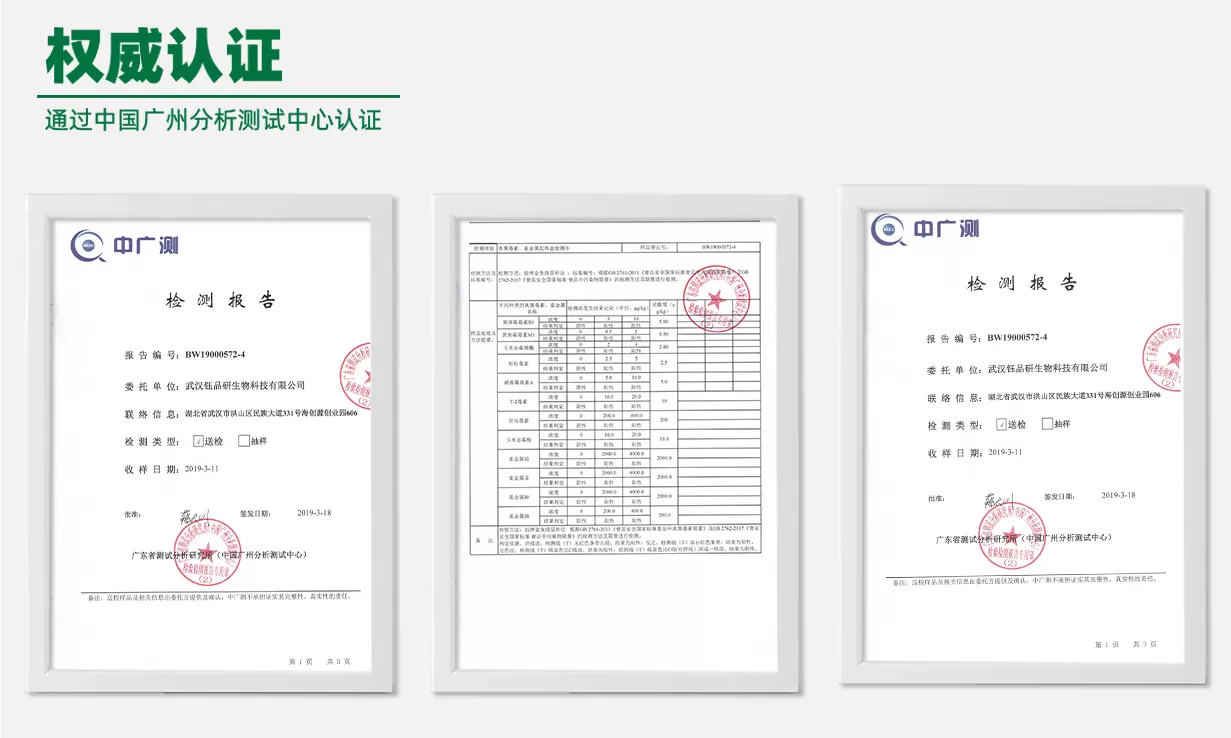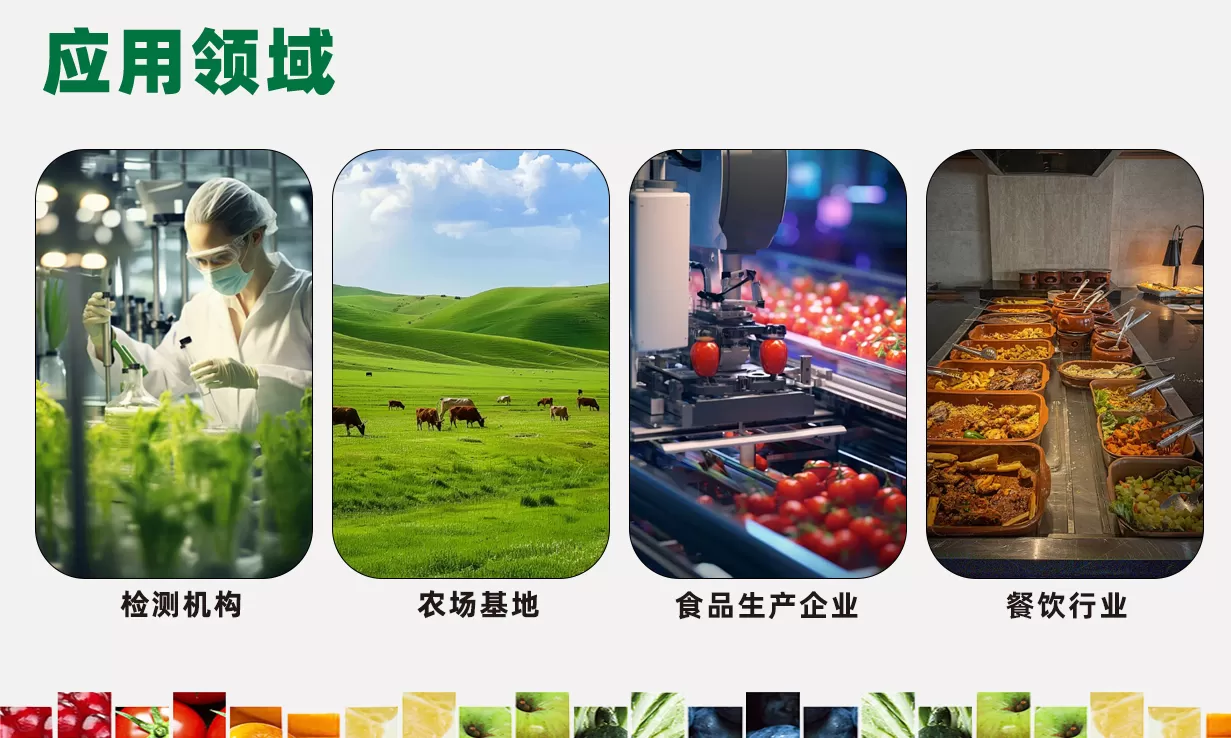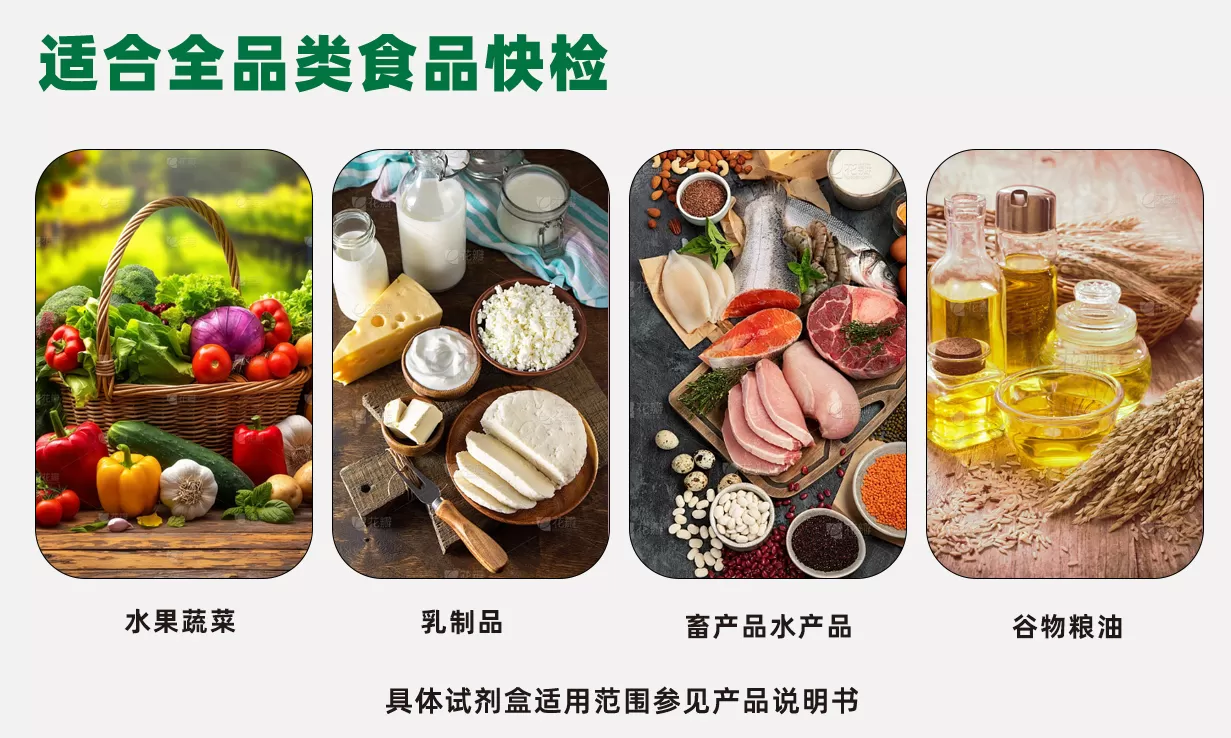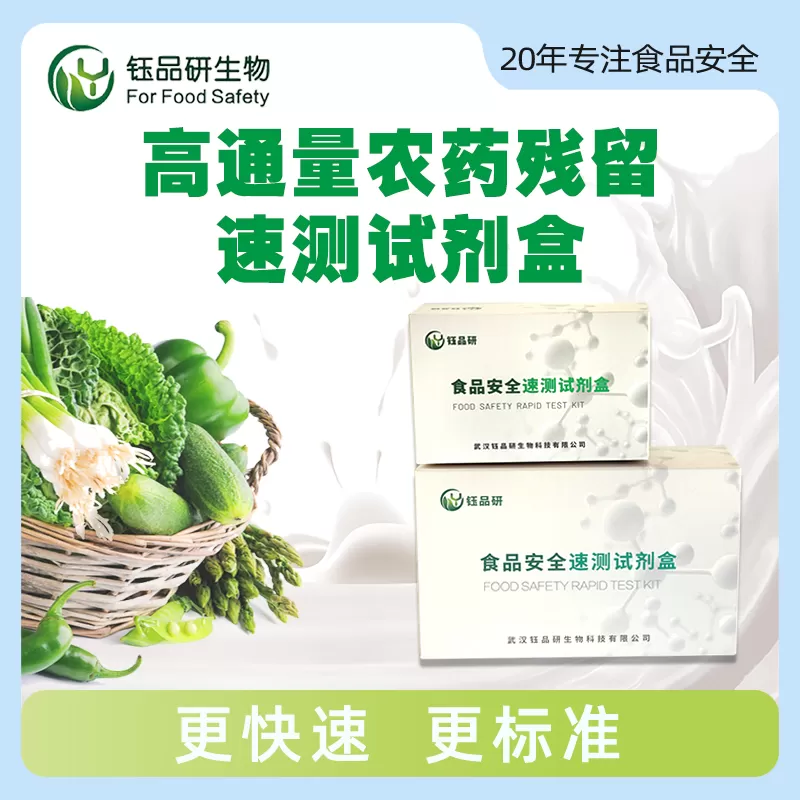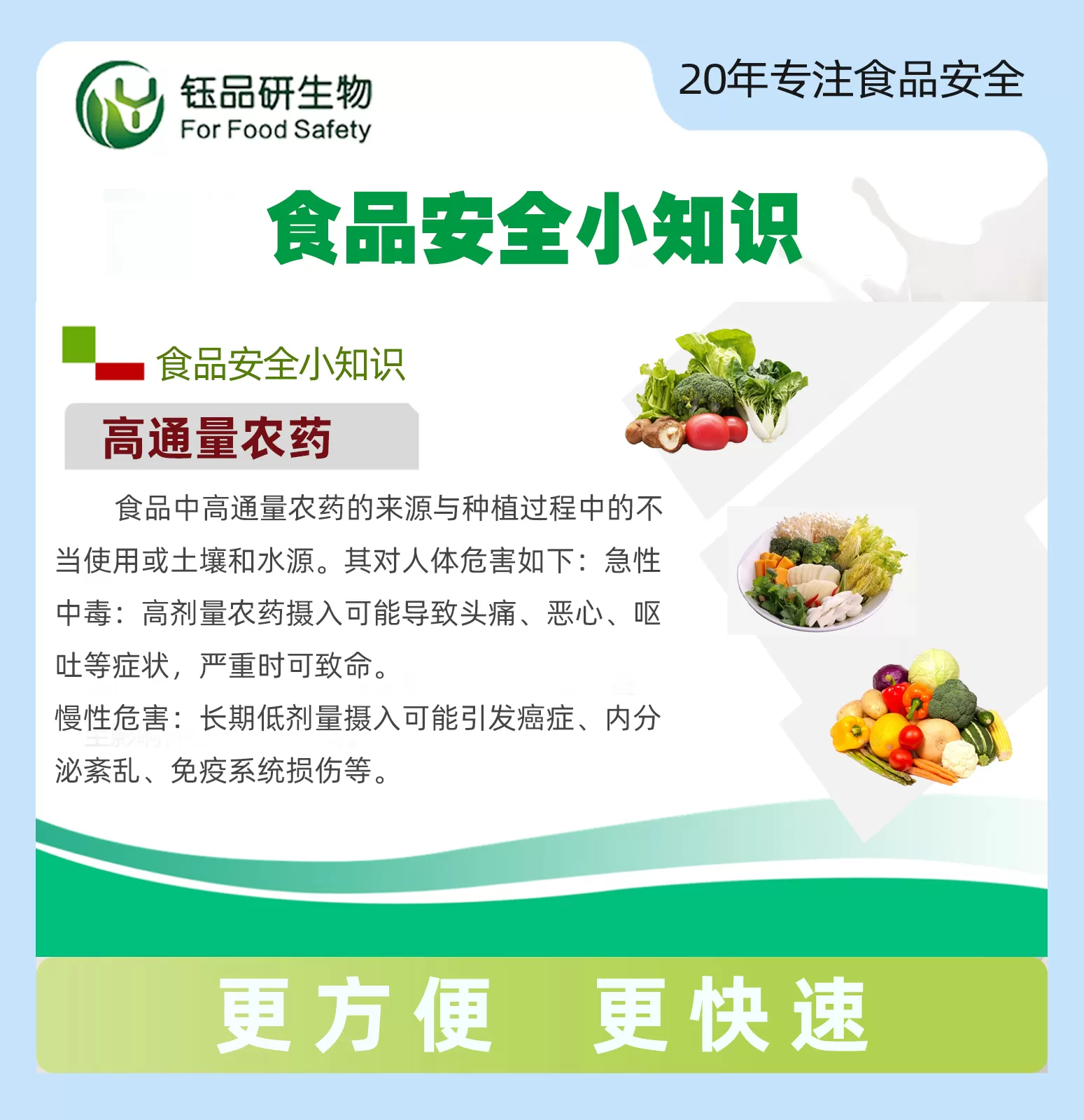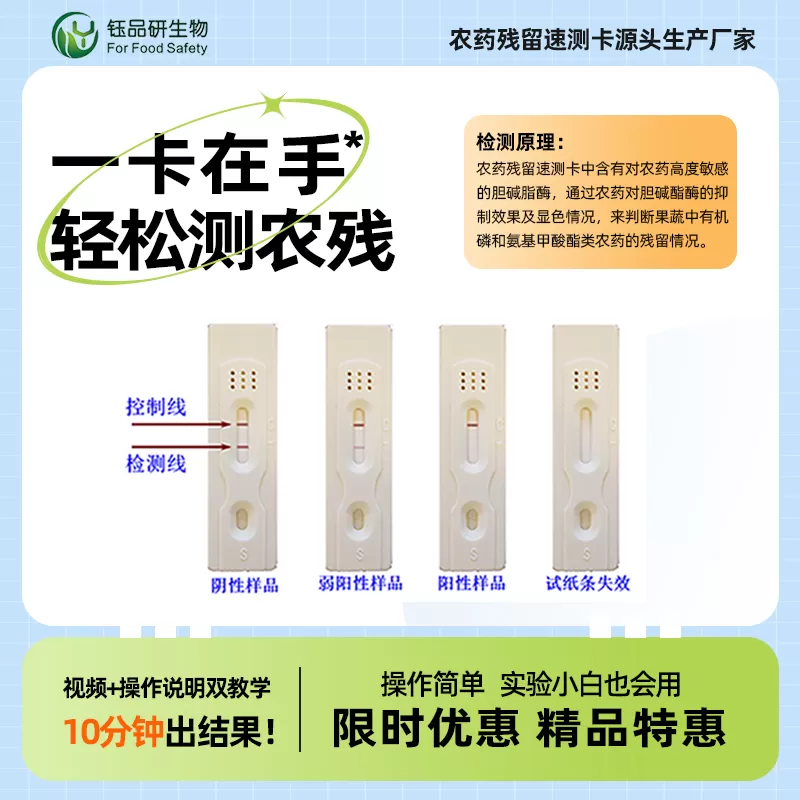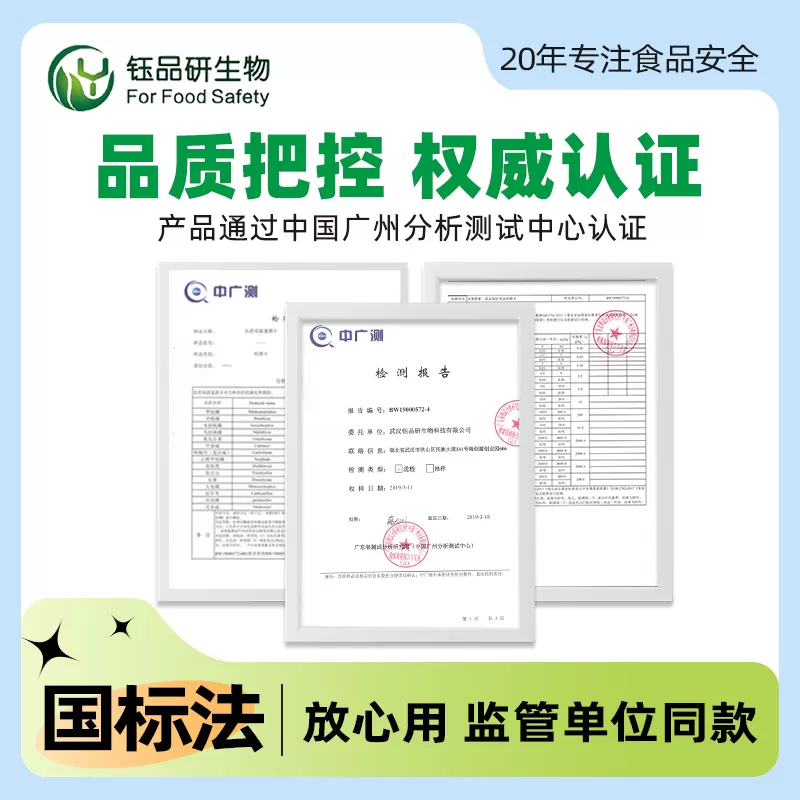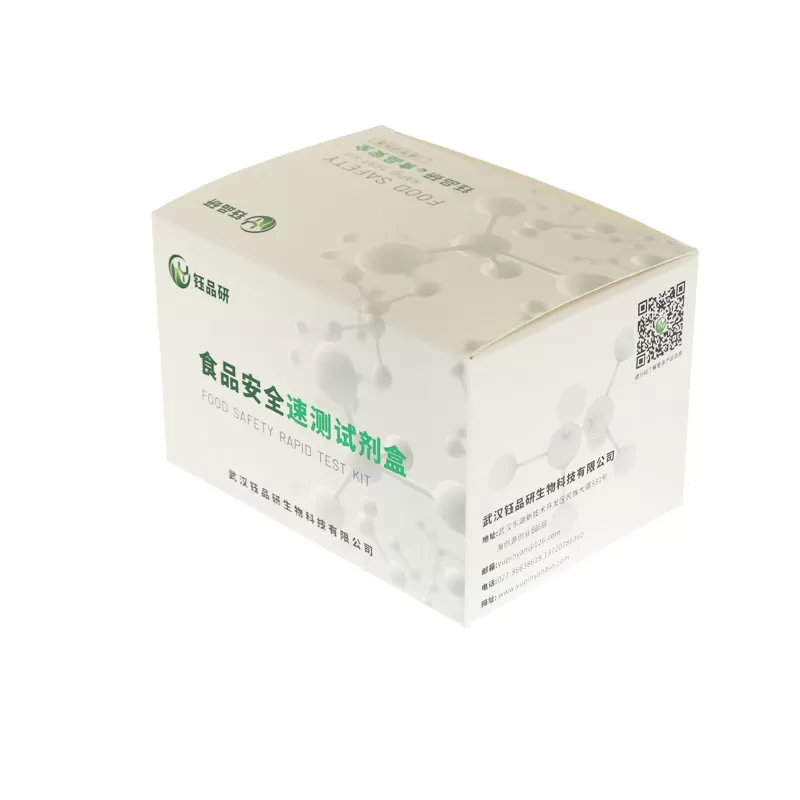High Channel Pesticide Residue Quick Test Kit Instruction Manual
Product No.: YP-06-96
1. Scope of application, suitable for rapid detection of organophosphorus and carbamate pesticide residues in fresh vegetables.
Second. Reagent configuration and storage
1. Buffer solution: Take 500 mL of purified water, add 1 pack of buffer reagent, dissolve for later use, and store at room temperature.
2. Substrate: 1 bottle of bottom powder + 120mL of purified water can be dissolved. Specific steps: Take 120mL (120g) of purified water in a blue-capped bottle, take 5 mL of purified water from it and dissolve 1 bottle of bottom (powder). After dissolving, pour it back into the blue-capped bottle. After mixing, refrigerate and store at 4 ° C for later use.
3. Color developer: 1 bottle of color developer powder + 120mL of buffer reagent can be dissolved. Specific steps: Take 120mL (120g) of purified water in a blue-capped bottle, take 5 mL of purified water from it to dissolve 1 bottle of chromogenic agent (powder), dissolve and then pour it back into the blue-capped bottle, mix well and refrigerate at 4 ° C for later use.
4, Cholinesterase: Dilute according to the ratio of 1:10. Specific steps: Take 1 ml of cholinesterase solution in a 10 ml glass bottle, add 10 ml of buffer solution, and refrigerate at 4 ° C for later use after mixing.
III. How to use
High-throughput pesticide residue quick test kit. The method of use is based on the national standard GB/T 5009.199-2003, as follows:
1, open the high-throughput agricultural residue speed meter stabilization equipment; open the constant temperature equipment in advance and adjust the temperature to 37 ° C.
2, the sample should not be washed with water, should be wiped off the surface of soil and other debris after sampling. In order to ensure that the sample is representative, leafy vegetables generally take samples from the tip of the leaves of different plants; fruit vegetables are sampled from the epidermis of different individuals.
3, weigh the sample 2.0g cut or chopped to about 1 cm square in the sample cup, add 10 ml of buffer, shake for 2-3 minutes, directly filter or pour into the test tube and let stand for 3 minutes to take the sample extract.
4, remove the microporous plates and plates as needed, and put the unused microporous plates into the self-sealing bag.
5, the first column on the left of the 8 wells are blank control wells, each well were measured with 100 µL buffer solution (the same batch of kits for the first time, 8 blanks need to be measured, the results will take the average of 8 blank calculation, print the results only print out a blank control absorbance average), the other micropores are sample wells, each well was measured with 100 µL sample extract.
6, in the blank hole and sample holes were added 50 µL chromogenic agent, 50 µL cholinesterase, gently shake and mix for 1 minute, incubated in a 37 ℃ thermostatic equipment for 10 minutes.
7, each well were added 50 µL substrate, quickly transferred to the high-throughput pesticide residues meter according to the set procedure for determination.
IV. Precautions
1. It is recommended to use a row gun and a sample adding tank during the detection process to ensure the accuracy and consistency of the test results.
2. The principle that reagents only come out of the bottle: Reagents sucked out from any reagent bottle are prohibited from being sucked into the bottle again to avoid cross-contamination.
3. The ambient temperature at the time of detection is about 25 ° C, and the room temperature is too low or there is no 37 ° C constant temperature equipment may lead to the control delta A
4. The samples specified in GB/T 5009.199-2003 must be extracted by the whole plant. The positive results produced by the method should be carefully reviewed.
V. Storage conditions and shelf life
1. Storage conditions: 4 ° C refrigerated storage.
2. Shelf life: 12 months.
